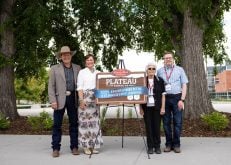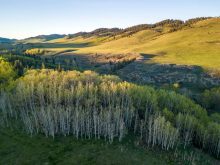There is a risk of bloat from grazing high-legume pastures, but it can be done with planning and attention.
“I’ve heard it said that there has been more money lost due to fear of bloat than has ever been lost due to bloat itself,” said Ian Murray, an Acme rancher and chair of the Agricultural Research and Extension Council of Alberta.
Murray grazes cattle on cicer milk vetch and meadow brome and has only lost one cow to bloat in nine years. There is an inherent risk of bloating from alfalfa, but there are other options available for high-legume grazing. Cicer milk vetch, which Murray uses for grazing, is drought tolerant, retains its leaves after freeze-out and presents less of a bloat risk than alfalfa.
Read Also

Grazing ‘sweet spot’ boosts pasture performance
Timing-focused approach to pasture management touted to boost forage growth, livestock gains while also cutting farmer labour and inputs
Murray uses a rotational grazing program on his pastures, grazing some twice in a year and giving others a longer rest period. He doesn’t fertilize.
“The legumes provide the nitrogen balance and we rely on the cows to recycle the phosphorus in the soil. When there is no cicer, there is no grass,” he said.
Cattle can spread milk vetch from one area of the pasture to another. Murray accomplishes this by grazing the area with more milk vetch first, and then moving the cattle to an area where it is less abundant.
“Milk vetch is a unique legume because it can reseed itself proficiently,” he said. “The cattle consume the pods and the seeds pass through their systems, and reseed. With good management, good rotation, and legumes in the mix, they create higher-quality pasture.”
Cicer milk vetch is slow to get going in the spring, and there is little growth in June. By August, there will often be more vetch in a pasture than grass.
Murray has also found that milk vetch retains its palatability right through winter (unlike alfalfa, which turns woody by fall) and that he has much more productivity and higher quality on his mixed pastures compared to straight grass pastures. This year, he grazed his replacement heifers and yearlings on a mixed pasture, and put 100 pounds more than normal on the heifers compared to a straight grass pasture.
Murray also likes the biodiversity of mixed stands.
“It’s fine to have two or five or 10 different species of grass, but having legumes in there changes the biodiversity above and below the soil,” he said, adding legumes have taproots and can access moisture that other plants can’t.















